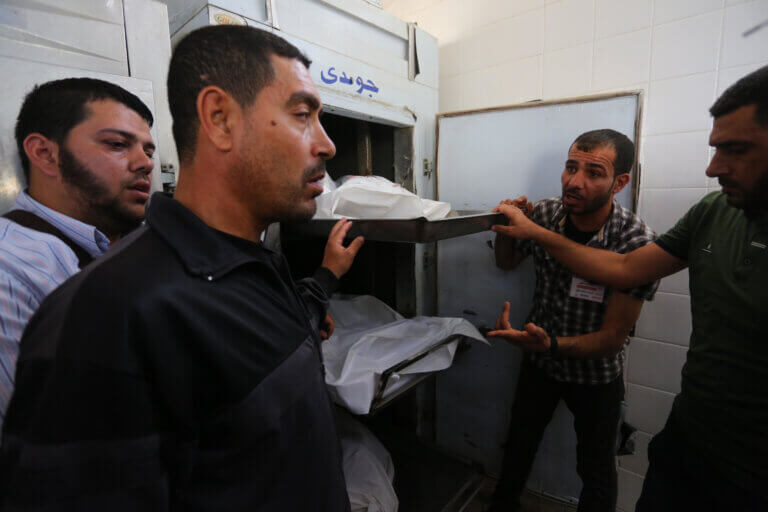
So far, no mainstream U.S. media outlet has followed up on her report. Their failure is journalistic malpractice.
Hass, the daughter of Holocaust survivors, actually lived in Gaza from 1993-97, and afterward published the valuable Drinking the Sea in Gaza (1999). She obviously still has excellent contacts there. This latest report starts by observing that 15 Palestinian families in Gaza lost multiple family members during the Israeli bombardment:
Parents and children, babies, grandparents, siblings and nephews and nieces died together when Israel bombed their homes which collapsed over them. Insofar as is known, no advance warning was given so they could evacuate the targeted houses.Hass contrasted this lack of warning with Israel's policy toward the high-rise towers in Gaza, where the military did phone residents an hour or so in advance, directing them to evacuate. She then reported an almost unbelievable fact: the Israeli army and the Shin Bet intelligence service actually "have current phone numbers for people in each structure slated for destruction." Under the Oslo Accords, the Gazan authorities are required to give the Palestinian population registry to the Israeli Interior Ministry. In what must be an unprecedented (and sickening) new feature of war, Israel's army "knows the number and names of children, women and elderly who live in any residential building it bombs for any reason."
She speculated that the Israeli military targets residences that it alleges have some connection to Hamas, "even if all it had was a telephone, or just hosted a meeting." She concluded that to the Israel military:
. . . once the "importance" of a Hamas member is considered high and its residence is defined as a legitimate target for bombing — the "allowable" collateral damage, in other words the number of uninvolved people killed, including women and children — is very broad.Amira Hass's article cries out for follow up reporting by U.S. journalists. Now that the ceasefire is in place, The New York Times, for instance, could ask Iyad Abuheweila, its courageous man in Gaza, to visit the ruins of the abu al Ouf family home, where the father, Ayman, an internal medicine doctor, died, along with 12 of his relatives. Hass named all 12 victims, who ranged in age from 9-year-old Mir to Amin, aged 90. (Abuheweila's own harrowing first-hand account in today's paper further undermines Israel's assertion that it aimed only at military targets.) Times reporters in Israel could work their sources inside the military, to seek clarification and justification for knowingly destroying entire families. The paper could also interview professors and legal scholars who study the ethics of warfare, and ask them to opine on "allowable collateral damage."
So far, nothing. Instead, the lead story in today's paper says that "the primary target" of "the Israeli aerial and artillery campaign" has been "Hamas's extensive network of tunnels for moving fighters and munitions, and Israel has also sought to kill Hamas leaders and fighters."



Comment: There are many attested instances where the Israeli Security Agency (ISA) has indeed at certain times, warned Gazans away from dangerous areas such as the fence. Inasmuch as the IDF has the mobile phone numbers of every household in Gaza (disturbing as that is), one can only assume that withholding a warning was deliberate. That would be pre-meditated murder.